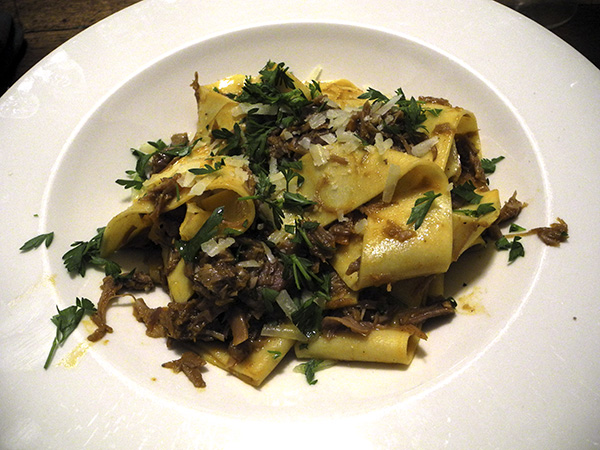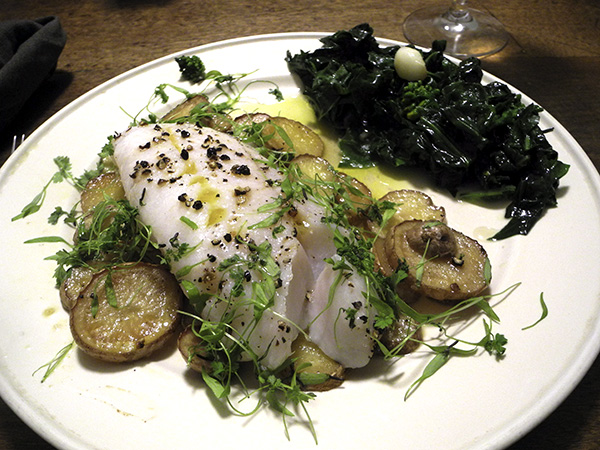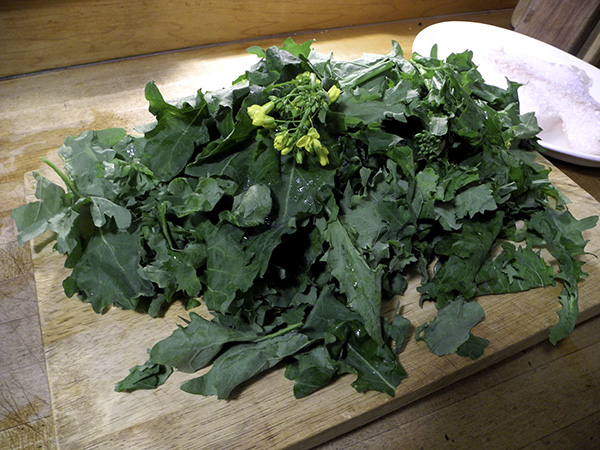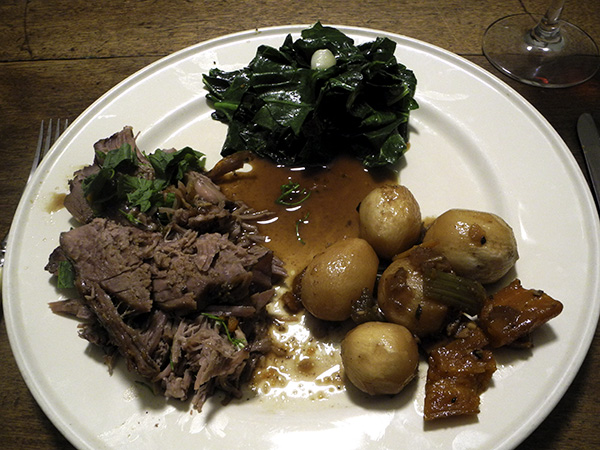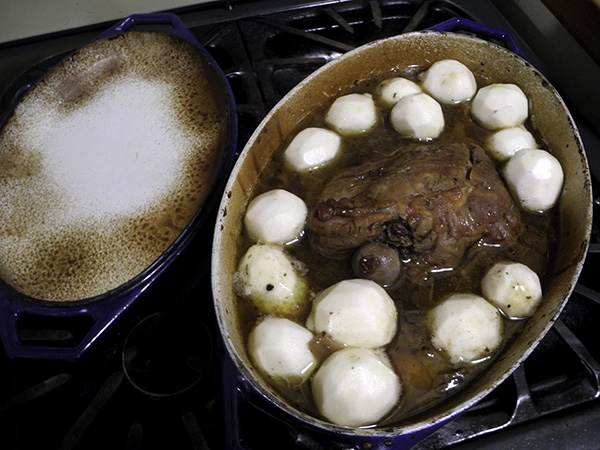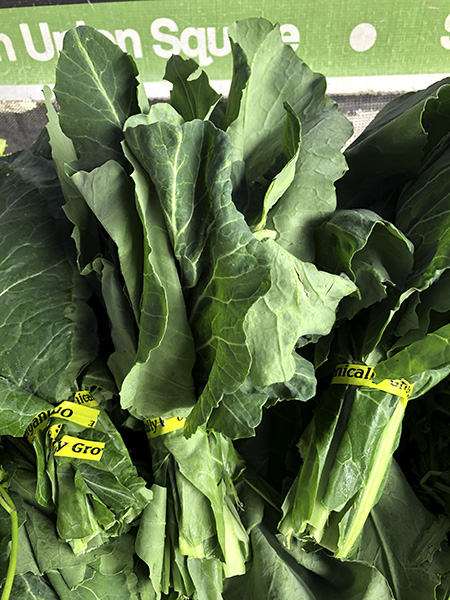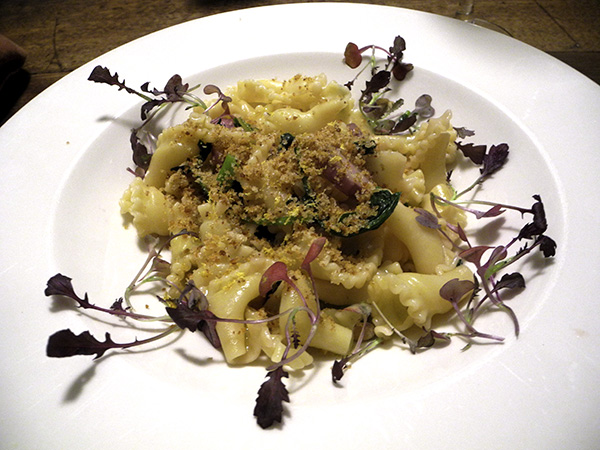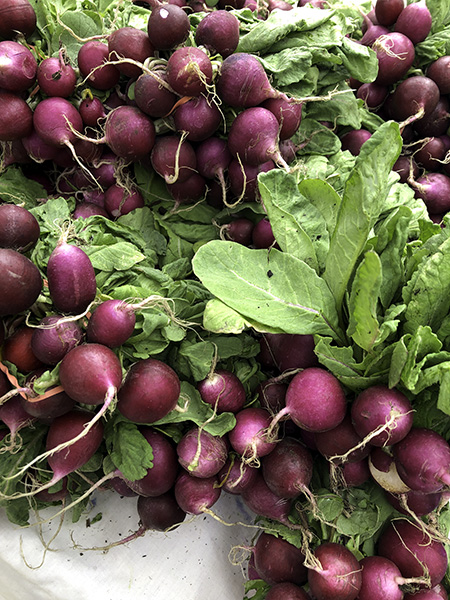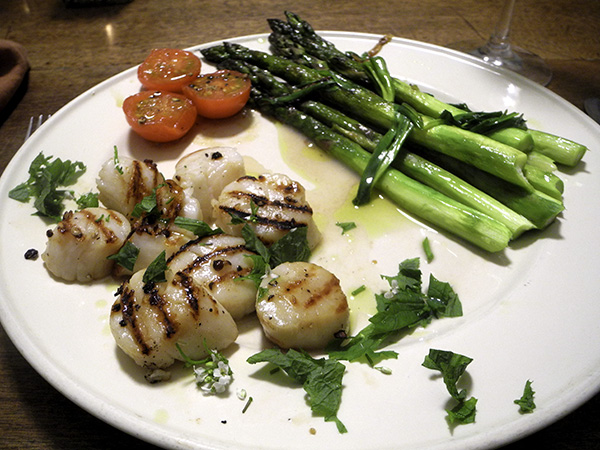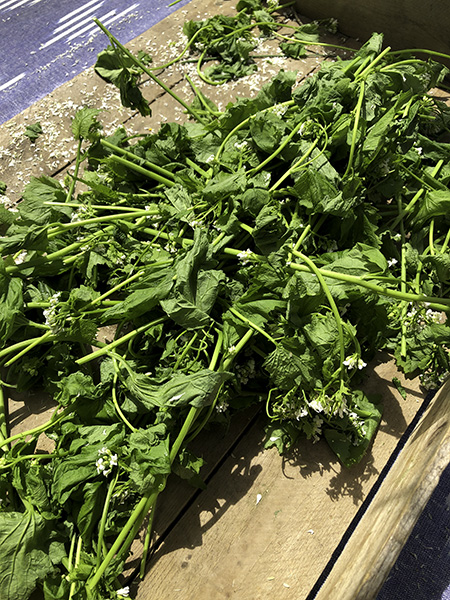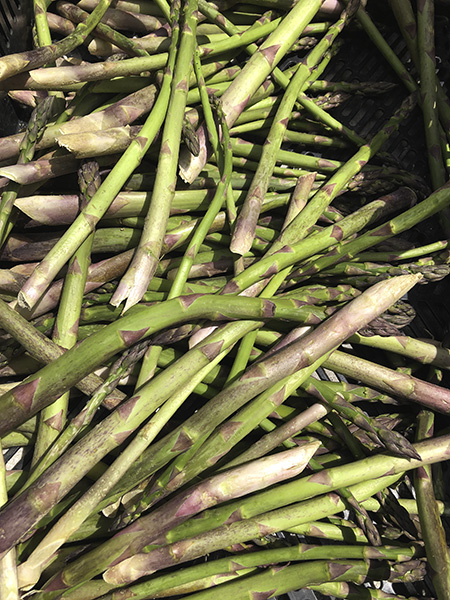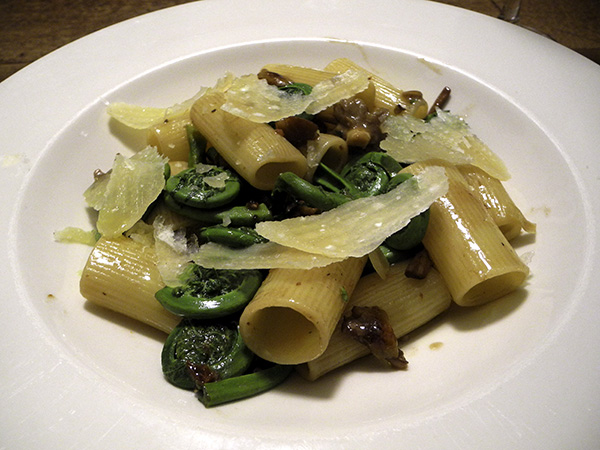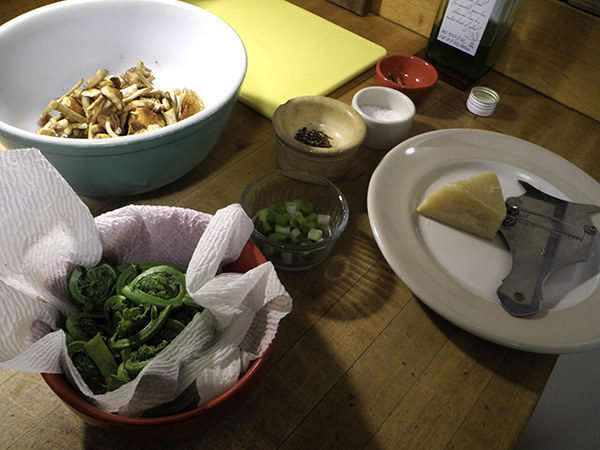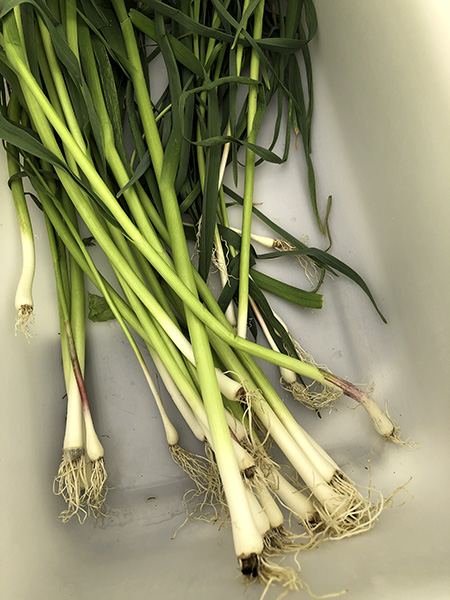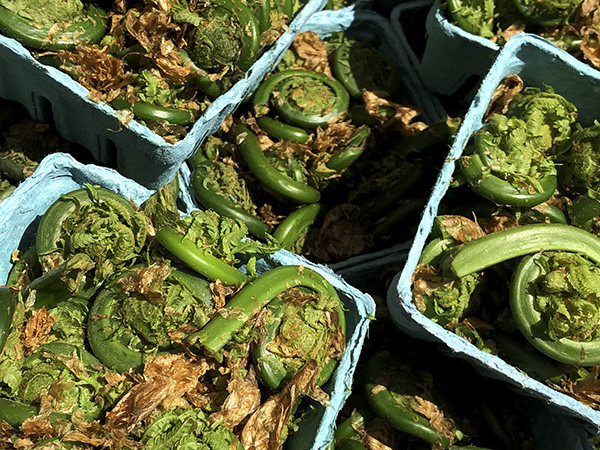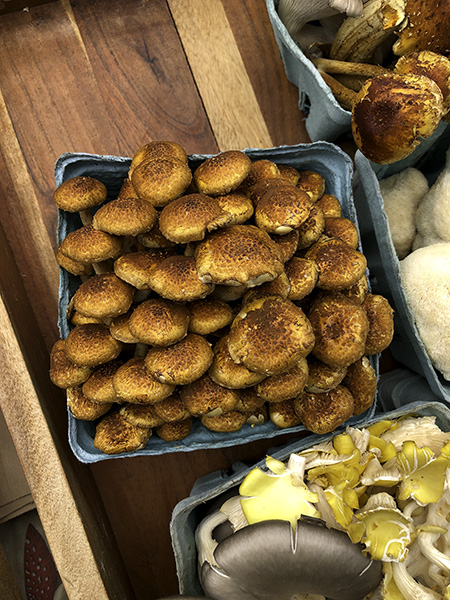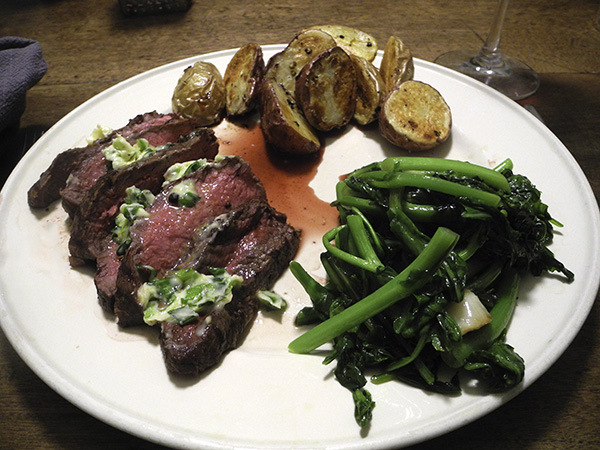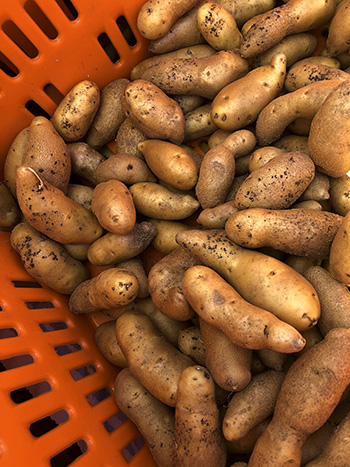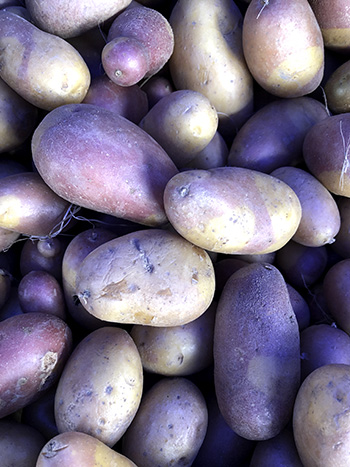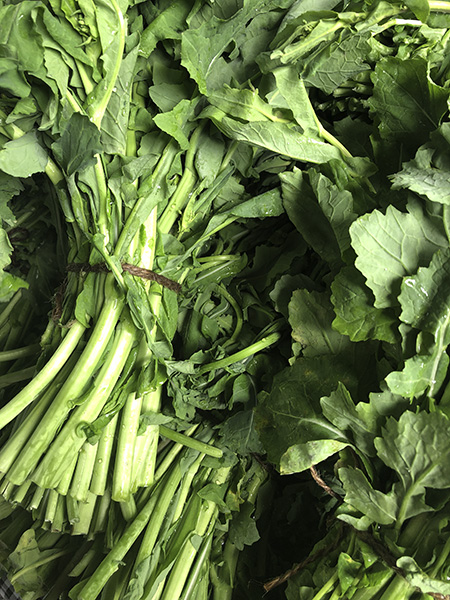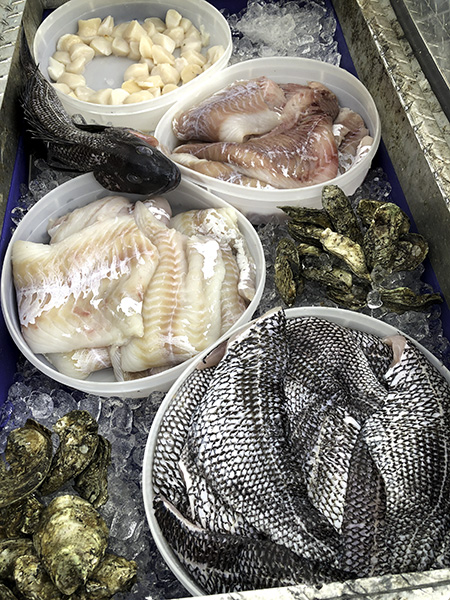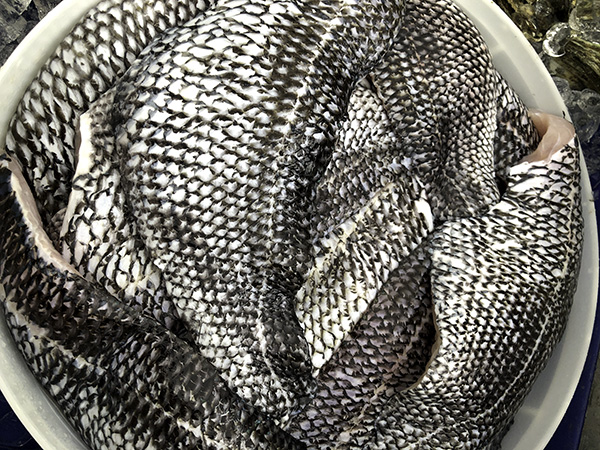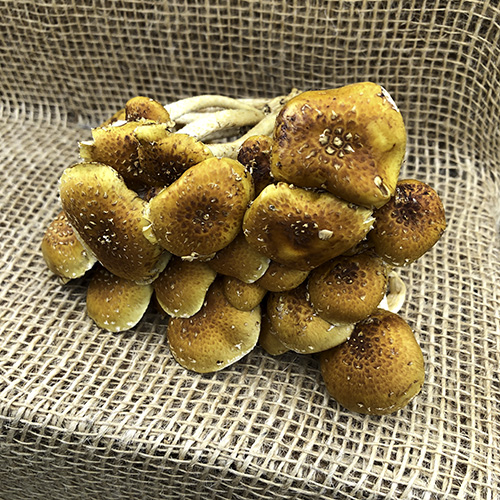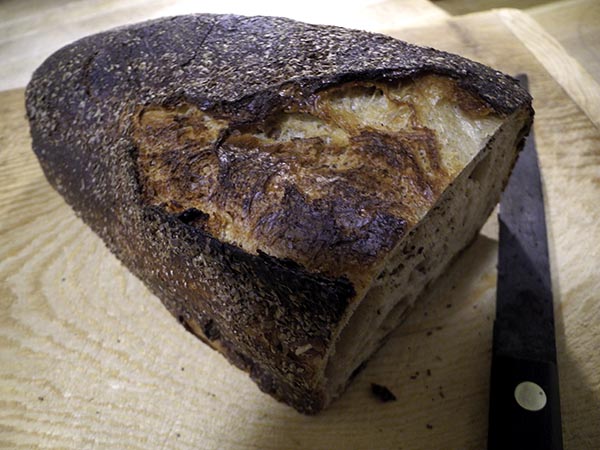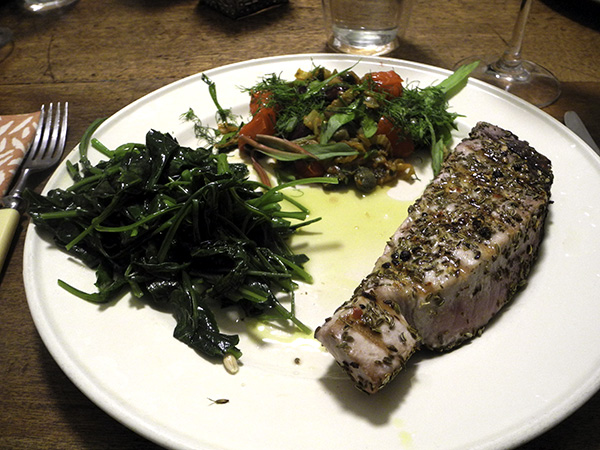
The best part of this meal was the company (and the food itself was really good). We had invited an American friend visiting New York from his home in Berlin, along with his non-Berlin brother, who was staying with him while he was here.
I’d been at the Union Square Greenmarket earlier in the day of course, and my idea was to bring home seafood and vegetables whose preparation would distract me as little as possible from a conversation I was really looking forward to. The two last tuna steaks lying on ice under the glass top of the fish monger’s display case would be perfect, and I quickly found a special green. The concept for a second vegetable began with 4 baby fennel bulbs, but it soon became more complicated. I thought it would still require little concentration, which turned out to be only half true.
But it was all great fun, and it went on for hours.


- because there had been a visit to a gallery opening earlier in the evening, there was no real first course, but while I was putting together the main, we enjoyed a mix of sweet and hot radishes from the Greenmarket, green or Korean mu radishes from Norwich Meadows Farm, and, from the week before, the last bunch of red radishes from Lucky Dog Organic Farm; we also nibbled on some rustic Italian breadsticks, Mario Fongo grissini integrali, from Buon Italia, and fennel-flavored taralli, also from Buon Italia
- the wine was a really good California sparkling, Eponina Brut California NV, from Naked Wines
The main course took more time to assemble than I had expected (the distractions were great).
- two thick 12-ounce tuna steaks from Pura Vida Seafood Company, rinsed, dried, and each of them halved to form 4 long pieces (because of their topography), tops and bottoms seasoned with sea salt and freshly-ground black pepper, then rubbed with a mixture of almost 2 tablespoons of a mix of some incredibly wonderful dried Semi di Finocchietto Ibleo [wild Sicilian fennel seed], harvested in the Iblei Mountains, from Eataly Flatiron and a little dried peperoncino Calabresi secchi from Buon Italia, in the Chelsea Market, both first crushed together in a porcelain mortar and pestle, the steaks pan-grilled above a medium-high flame for little more than a minute or so on each side (when the cook can remember to watch the time), finished on the plates with a good squeeze of the juice of an organic lemon from Chelsea Whole Foods Market and a drizzle of Trader Joe’s Sicilian Selezione olive oil
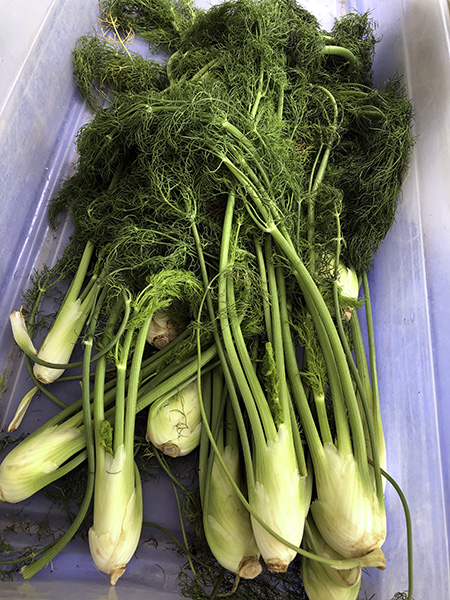
- a vegetable compote, inspired by Marc Bittman, of four small spring fennel bulbs from Central Valley Farm, most of the stems and fronds removed (the remaining stems and most of the fronds kept for another use, some of the more tender stems and some of the fronds set aside, sliced crosswise about one half to one quarter of an inch thick, added to a medium heavy antique high sided copper pot in which a few tablespoons of olive oil had been heated over a medium flame, salt and black pepper added, sautéed until quite soft, ideally without burning (I burnt some edges this time), more than a teaspoon of fresh thyme leaves from Phillips Farms and 5 or so thinly sliced ramp bulbs from Lucky Dog Organic Farm added and stirred for about a minutes, then 10 ounces of halved Village Farms mini San Marzano baby plum tomatoes from Canada (the grower’s headquarters are in British Columbia) via Trader Joe’s, half a cup of pitted kalamata olives from Whole Foods Market, and almost a fourth of a cup of thoroughly rinsed large Mongetto Salinas salted capers from the Eolian Islands, via Eataly, added, the flame raised a little the all cooked until the mixture was virtually ‘saucy’, served with a garnish of some chopped reserved fennel fronds and thinly sliced ramp leaves
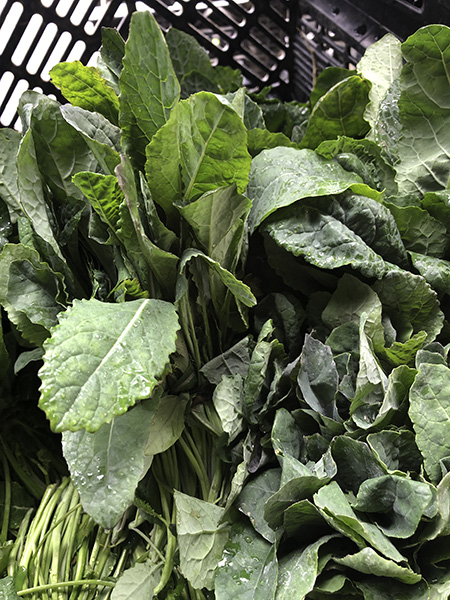
- one and a half generous bunches of baby cavolo nero, lacinato kale, or black kale, from from Migliorelli Farm, briefly wilted with olive oil and 5 halved garlic cloves from Mexico via Whole Foods Market, the garlic first heated in the oil until almost beginning to brown, finished with salt, freshly-ground black pepper, a squeeze of lemon juice, and a drizzle of olive oil
- the wine with the tuna was an Oregon (Willamette Valley) rosé, Chris Baker Willamette Valley Rose of Pinot Noir 2017, from Naked Wines
- the music was the four of us
